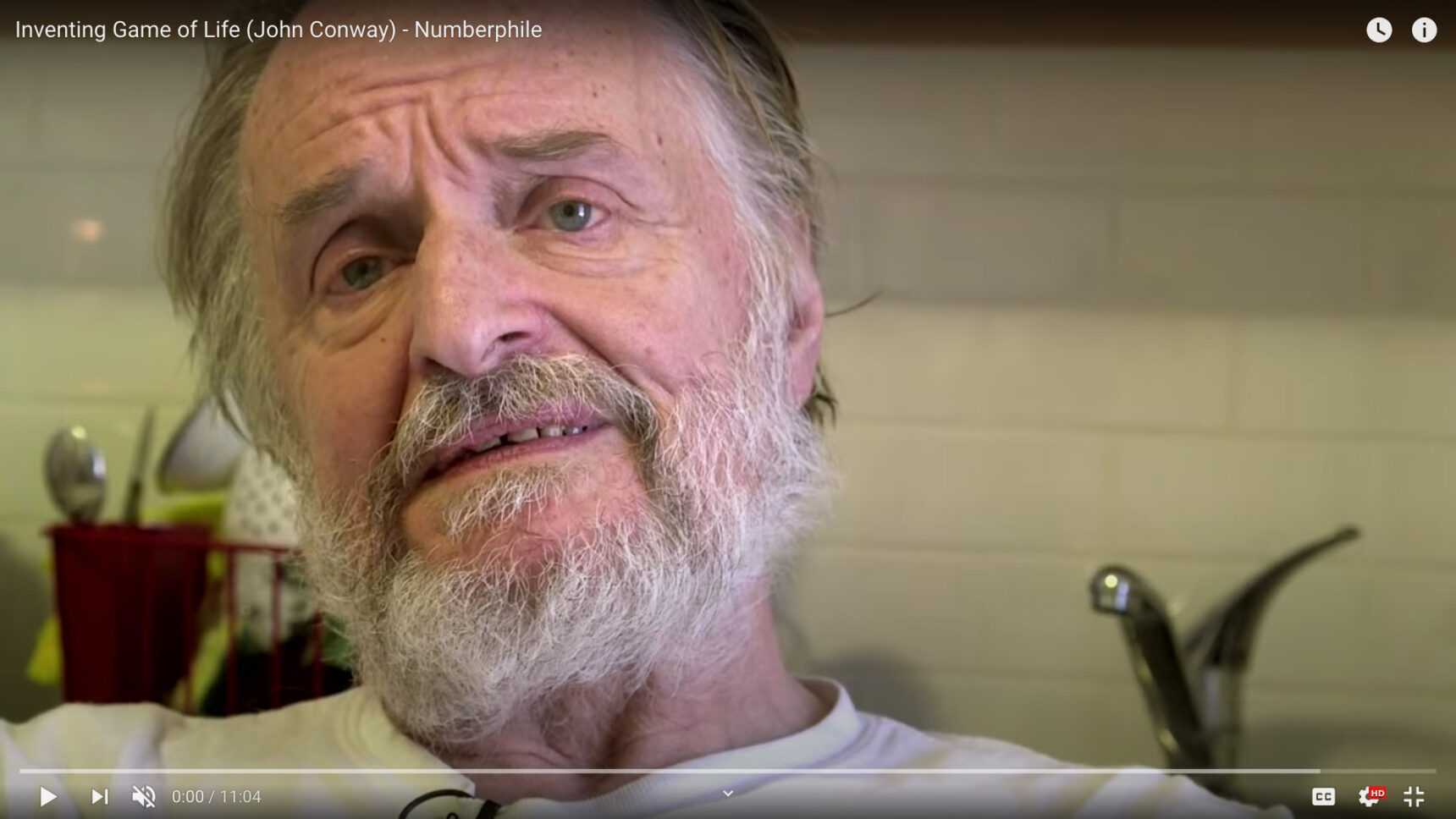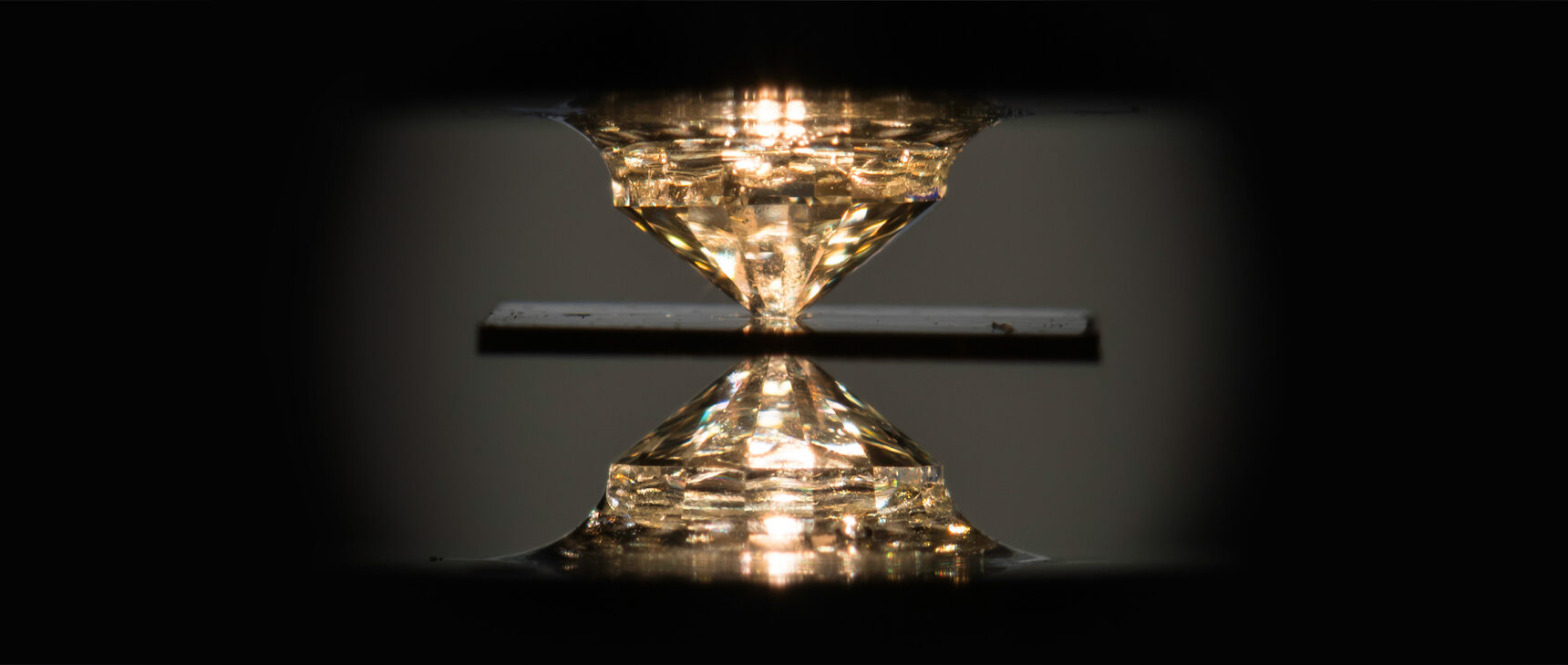Celebrating the Playful Magic of John Horton Conway

James Round for Quanta Magazine
Introduction
The legendary mathematician John Horton Conway, who died in April of COVID-19, took a childlike delight in inventing puzzles and games. He performed detailed analyses of many puzzles, such as the Soma cube, peg solitaire and Conway’s soldiers. He invented the “Doomsday algorithm” (a fast method of calculating the day of the week in your head — Conway could do it in under two seconds) and countless games, including Sprouts and the famous Game of Life, which launched the study of cellular automata.
A great deal of Conway’s serious mathematical work also arose from his penchant for playing mathematical games. He made original contributions to group theory (the Leech lattice, monstrous moonshine), higher-dimensional geometry, tessellations, knot theory, number theory (surreal numbers), algebra, mathematical logic and analysis.
This month, we celebrate the playful genius of the famous British mathematician with two puzzles and an exploratory game. First, we’ll play around with a numerical puzzle Conway invented that is perfection itself. Then we’ll enjoy a geometric puzzle that relates to some of his most visually pleasing work. Finally, we’ll immerse ourselves in an open-ended game contributed by a Quanta reader that resembles Conway’s iconic Game of Life.
Puzzle 1: Digital Perfection
There is a mysterious 10-digit decimal number, abcdefghij. Each of the digits is different, and they have the following properties:
- a is divisible by 1
- ab is divisible by 2
- abc is divisible by 3
- abcd is divisible by 4
- abcde is divisible by 5
- abcdef is divisible by 6
- abcdefg is divisible by 7
- abcdefgh is divisible by 8
- abcdefghi is divisible by 9
- abcdefghij is divisible by 10
What’s the number?
Before you begin this puzzle, take a minute to admire the absolute perfection of its form. It flows completely naturally, without an iota of arbitrariness or artifice. Once you read the first two conditions, you know exactly what the rest of puzzle is going to be. And then to have this natural set of conditions yield a unique answer is amazing. For me as a puzzle maker, this digit substitution puzzle inspires the same feeling that Mozart inspired in Einstein, who said that Mozart’s music “was so pure that it seemed to have been ever-present in the universe, waiting to be discovered by the master.” Only someone as numerically gifted as Conway could have plucked such a perfect Platonic form from puzzle heaven!
You can solve this puzzle by performing a brute-force search with a computer, of course, but you don’t need to. I urge you to do it using pencil and paper. All digit substitution puzzles of this type can be solved with a two-step process familiar to those who’ve solved a sudoku puzzle — first you deduce relationships between the digits, which narrows the possibilities, and then you do a systematic trial-and-error search for the unknown digits. In this case, you can use the tricks you learned in school for determining if a number is divisible by a given digit. If you squeeze the last drop of deduction from the puzzle conditions, you won’t have too many trial-and–error candidates to search through.
In fact, if you want a stiffer challenge, try doing this puzzle entirely in your head. After all, Conway was known for solving math problems “with his bare hands.” It requires a lot of focus and patience, but I assure you it can be done.
Puzzle 2: The Ambiguous Triangles
There is an isosceles triangle that contains an angle of x degrees. The ratio of the two different lengths of its sides is y.
It turns out that not one but two different triangles have the exact same values of x and y!
What are the values of x and y for these two isosceles triangles? What’s special about the triangles, and how do they relate to Conway’s work?
For our final offering, reach out for that paper and pencil again. In fact, get several sheets of graph paper. This last game will put you in a Conway frame of mind — you’ll be doodling little diagrams and creating different structures, just as he did with his Sprouts game and the Game of Life. Our game, which creates structures like polyominoes, was contributed by Quanta reader Jona Raphael.
Puzzle 3: Hairy Random Patterns
You have an infinite plane on which you place square tiles. One at a time, you add new tiles randomly such that each new tile shares at least one edge with a previously placed tile. The probability of a tile being placed in any given location is proportional to the number of edges of previously placed tiles that border that location.
Consider these two examples:
- If there is only one tile, then the second tile has an equal probability of ending up north, south, east or west of the original tile.
Quanta Magazine
- If there is a ring of eight tiles, then there are 12 positions around the outside of the ring and one position in the middle, all of which are valid for the next tile placement. The one in the middle is four times as likely to receive the tile as any outside placement because it shares four edges with previously placed tiles, rather than just one.
Quanta Magazine
We define the “hairiness” (H) or exteriority of any configuration as the number of exposed tile edges divided by the number of tiles. For example:
- With one tile on the plane, H = 4 edges ÷ 1 tile = 4.
- For a ring of eight tiles, H = 16 edges ÷ 8 tiles = 2.
- For a row of eight tiles, H = 18 edges ÷ 8 tiles = 2.25.
The reciprocal of H may be called the interiority or compactness of the configuration.
The aim of this game is pure exploration. Unlike most games we’re used to — but like Conway’s Game of Life — it’s a “no-player never-ending” game, as Conway described his creation. To me, the dynamics of our game resemble how grown children balance their desire to stay close to their parents with their desire to strike out on their own. The parameter H is a measure of how much they disperse while still remaining in minimal contact, while its reciprocal, interiority, is a measure of how much they huddle.
Here are some questions to direct your exploration of this square-tiled world.
- A new tile may be placed next to a single edge (touching only one tile), at a corner (touching two), inside a “U” (touching three) or inside a hole (touching all four). How does each placement affect the number of exposed edges in the new configuration?
- What are the minimum and maximum values of H, and what kinds of tile patterns do they correspond to? Can you come up with an approximate or exact formula for the maximum and minimum values of H as the number of tiles (n) increases?
- What’s the expected value of H (approximate or exact) for a given value of n?
- Find the smallest tiling that is “balanced,” such that the addition of the next tile is as likely to increase the number of exposed edges as it is to decrease it. Can you find a symmetrical configuration that has this property?
- Find the smallest tiling for which the expected value of H remains the same after you add one tile. What’s the next-smallest tiling for which this property is true?
That’s it for directed play. Now go forth and explore this game by yourself. Try to find some interesting new questions to answer. Maybe you’ll find a novel structure (please post pictures of interesting configurations!) or prove a theorem. And while you are at it, suggest a name for this game.
Play, and make the spirit of Conway smile!
Editor’s note: The reader who submits the most interesting, creative or insightful solution (as judged by the columnist) in the comments section will receive a Quanta Magazine T-shirt or one of the two Quanta books, Alice and Bob Meet the Wall of Fire or The Prime Number Conspiracy (winner’s choice). And if you’d like to suggest a favorite puzzle for a future Insights column, submit it as a comment below, clearly marked “NEW PUZZLE SUGGESTION.” (It will not appear online, so solutions to the puzzle above should be submitted separately.) Update: The solution has been published here.
Note that we may hold comments for the first day or two to allow for independent contributions by readers.




